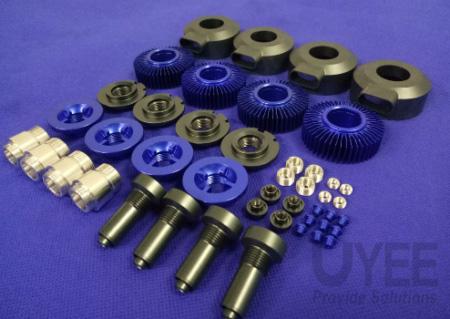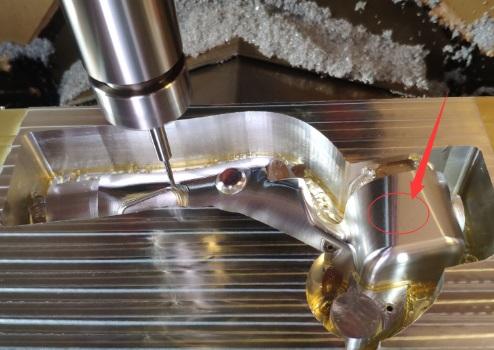9 Tips When You Are Custom Milled Parts
Custom milling is simply known as CNC machining which includes CNC milling, CNC turning, EDM, etc —Due to the good speed of CAD modeling and the ease of online orders of global shipping, it is now convenient to create or order custom milled parts in a matter of days. Here are some pints to help you make the most of your CNC custom milled parts.

-
Buy some good quality cutters
Don’t buy cheap, low-quality cutters. Get some decent blades from a well-known brand at a fair price. It will significantly differentiate the quality of the CNC machined prototype parts produced and remove a slew of needless issues that may arise using less expensive equipment. Carbide cutters, for example, can last longer. You’ll want to have a few different versions, such as 12″ and 14″ and so on. Wear your protection goggles because these cutters will shatter. It’s also an excellent deal to purchase a complete drill set.
-
Purchase a high-quality vise, parallels, and a clamping kit.
Workholding is essential for holding the milled parts in place. You’ll need a high-quality vise that will last for several years. You don’t want your machined prototype part to go out of business.A good clamping kit will allow you to mount your vise to your table’s T-slots. Finally, invest in a good selection of parallels to hold the workpiece parallel or equally elevated for the cutting tool/spindle to move over.
-
A coolant misting system is needed to prevent chip buildup.
There are two kinds of siphons: siphon-based and micro-drop. The siphon mechanism atomizes the coolant fully into an aerosol, which can be messy. The micro-drop device pressurizes the coolant, holding the coolant and air apart until they reach the tool’s tip. When the coolant reaches the workpiece with the micro-drop mechanism, it vaporizes. It’s a lot more effective and less messy. A successful misting device can aid in the prevention of chip buildup.
-
Learn to use Manual Data Input (MDI)
Using the Manual Data Input (MDI), which gets accessed via the MDI keypad on your CNC machine’s control panel, will save you a lot of time and improve your productivity. It is easy to understand and will save you a lot of time. You can set some simple g-codes and change your X, Y, and Z coordinates, as well as shift your axes, and the computer will move fast once you’ve entered the details. The machine’s fast movement get referred to as “Rapids.” You want the cutter to go in the direction you want it to go.
-
To improve accuracy, invest in a feeds and speeds calculator.
When making your cuts, accuracy is of the utmost importance. To ensure this, use a feeds and speeds calculator to ensure that your spindle speeds and feed rates are accurate from the start.

-
Purchase a touch tool measuring kit to obtain precise Z-height measurements. Purchase an Edge Finder as well and use it to set your part zeros.
For precision, the computer must know where the tip of the tool is. The Touch Tool will tell your computer how long your instrument is and where the end is in Z. An Edge Finder is needed to set the X and Y positions. After inserting your material into your vise and inserting a tool into the spindle, you can use these measuring instruments to put your zeros.
-
Tram your mill and vise for accurate cuts
Tram is the angle of your mill head concerning the table. A tram runs parallel to the x-axis and another parallel to the y-axis. When starting a new assignment, it is critical to inspect the tram on your mill. If you want precise cuts and the best finishes, your mill should be in tram mode. It is a fundamental skill that every machinist must master. Often, make sure your vise’s jaws are correctly get aligned with one axis or the other.
-
Avoid using stainless steel. Starting with aluminum, brass, and mild steel is an excellent place to start.
You’re now able to start making some cuts. The first seven tips have now brought us to this stage, and we are getting prepared. You should stop using more rigid materials, such as stainless steel, for your first cuts while you’re just starting. It is critical to have confidence in using softer materials and mastering cuts while reducing the possibility of breaking or premature wear on your cutters. You will want high-quality finishes. The term “Mild Steel” can get used in a variety of places on the internet.
-
Create a square block of aluminum material and a few sets of step jaws out of it.
Cut some slightly oversized pieces of material to act as vise jaws with your saw. Cut the stock somewhat more extensive than required. The following move would be to square these bricks. Squaring entails making a series of milling cuts until both sides are parallel or perpendicular to each other, resulting in a workpiece that is “square.”
After you’ve squared the stuff, you’ll cut it to size by milling it until it fits perfectly in your vise jaws. (You will need two square bits, one for each jaw.) The mounting holes should then be drilled and countersunk. Finally, mill a step down each jaw. You may use this step instead of parallels when inserting the material into the vise if you prefer.

